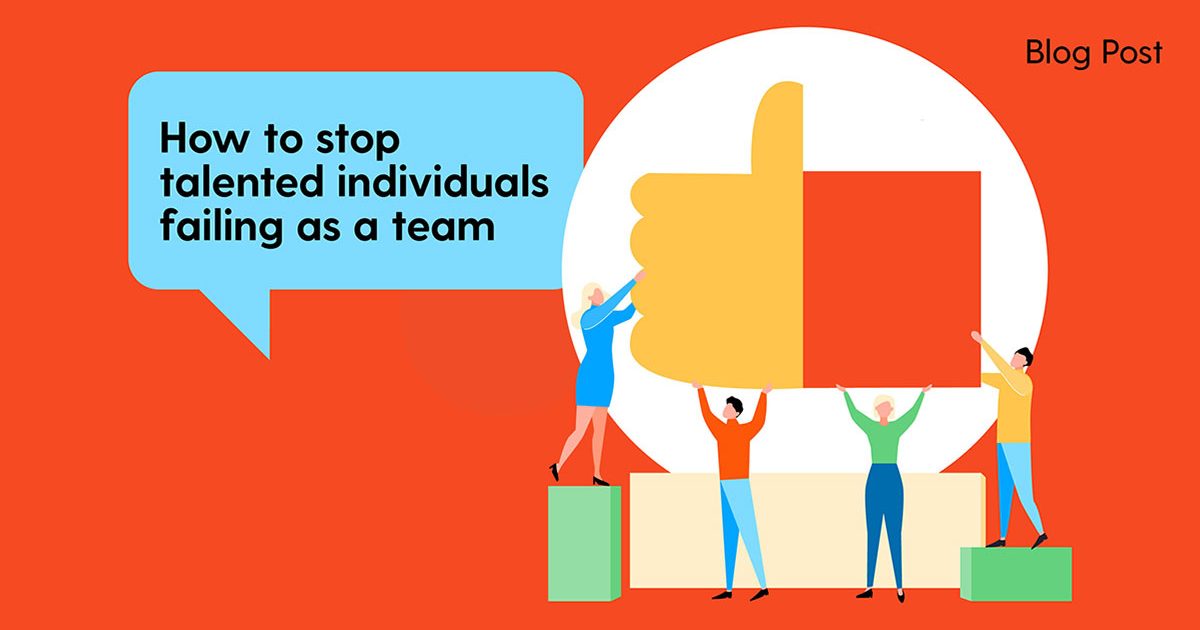Time and again, reality TV shows and competitive programmes have shown how a group of individually brilliant people can completely implode when required to work as a team. At the same time, another group will somehow click together and collaborate to produce an outstanding result. So what creates the difference? What can we learn from watching both types of teams carefully? When it comes to leading a team at work, how can we minimise the causes of team failure and encourage the ingredients of success? Let’s start with a few observations from the TV shows.
If the competition eventually leads to an individual winner, the dreaded team activities are more likely to produce some disasters. As viewers, we often find this window on human behaviour enthralling. That’s why the programme drops a team activity in from time to time.
Individuals or partnerships who have shown considerable talent and motivation often struggle to collaborate in a team, even for one activity, with those who are ultimately their competitors. Disagreements and a lack of genuine collaboration can lead to one team member after another disengaging and happily sitting back to watch their ‘team mates’ fail. They’re off the hook and it’s not their fault if the others didn’t listen. By quietly withdrawing support they end up looking like winners, simply because the incomplete team failed miserably.
On the other hand, when the show’s eventual winner is a team that stayed together the dynamic is completely different. In a winning team individual talents are recognised, celebrated and thoughtfully combined with others to create outcomes far greater than any member of the team could achieve on their own. Sure, there might be a player-of-the-day, but it’s the team’s result that counts above all else. Even if they don’t win, each team’s collective accountability and pride are clear to see. In successful teams, an individual weakness doesn’t lead to the blame game. Instead, it’s quickly recognised by all, adjusted for and coached out over time.
With all of these valuable observations in mind, here are three proven strategies to create a highly successful team while continuing to build individual excellence.
Recognise individual strengths and the power of diversity
It’s important that everyone in the team realises they don’t have to be the best person at everything. It’s the team’s collective capability that counts. By maintaining a team view, individual strengths are not seen as a threat to others, but a bonus. They’re something everyone in the team can draw on to achieve collective goals.
Rather than diving into specific strengths, you could begin by focusing on the different thinking styles and personality types in your team. These are often measured through well-recognised psychometric assessments like the Herrmann Brain Dominance Instrument (HBDI), Myers-Briggs Type Indicator (MBTI) and Big Five Inventory (BFI). Consider inviting a specialist in to help interpret, share and discuss the results with you and your team. This can make it easier for everyone to safely explore, discover and appreciate the level of diversity you have to draw on.
Another way to highlight and celebrate individual strengths is to encourage peer recognition. To work well, recognition should be frequent, prompt, personalised, inclusive and visible. There are lots of simple ways to do this that don’t require big budgets for rewards.
Starting weekly team meetings with a call for ‘shout-outs’ is one example. You can lead the way by making your shout-outs personalised and specific, as well as linking them to how the individual’s action or behaviour supported a specific team goal or company value.
Specify each person’s role in achieving a team goal
Having set your team a SMART goal (one that’s specific, measurable, achievable, relevant and time-bound) it’s essential to list the tasks involved and assign them to specific individuals. This should be done in a team planning session, which you can lead. As the project evolves, new tasks will become apparent and some may no longer be required. It’s a good idea to regularly review the task list and who is responsible for each one. This is standard project management practice (what, by who, by when and dependencies). The vital point is to develop and manage the plan as a team.
By making everyone accountable for achieving the team goal, but publicly giving each person their own responsibilities, you’ll foster productive collaboration and prevent anyone from dropping the ball. If someone is struggling to deliver a task on time, they should feel sufficiently safe to flag the issue early and have the team help create a solution. It’s like kid’s soccer. When a goal is scored against your team, you learn to not criticise the goalie for letting the ball through, but to realise as a team that the ball should not have reached your goalie in the first place.
Celebrate success as a team
When a goal you set for a team is reached, it’s essential to include the entire team in the resulting celebration. Rewarding only the team leader or specific people for individual contributions, rather than the whole team equally, sends the sort of message that leads to teams falling apart. However, rewarding and recognising everyone in the team equally sends a clear message that you value the collective result above all else.
Like all forms of recognition, team celebrations should be prompt, specific and frequent. They can be as simple as a shared lunch, a ‘friends and family’ picnic or a group activity like ten-pin bowling. The team’s achievement can also be recognised by senior management in an organisation-wide shout-out.
Remember to link the result to the wider team, department, and organisation goals and values. This helps to sharpen everyone’s focus and clarify expectations for future projects. The whole purpose of teamwork is to harness individual strengths into a much stronger joint effort that’s directed towards organisational objectives.
Check out an easy way to reward employees for working effectively as a team.
